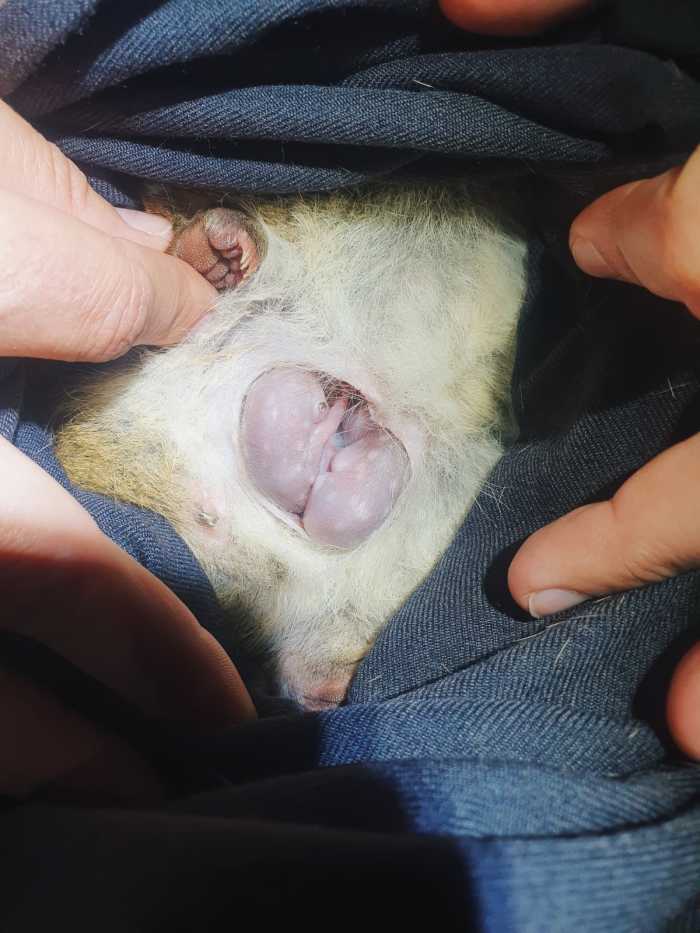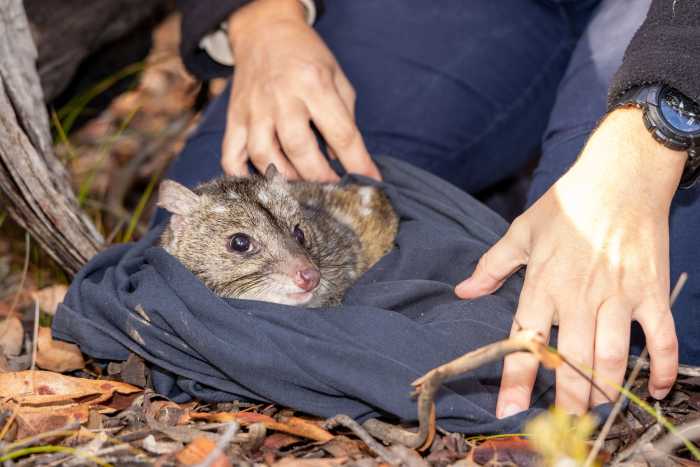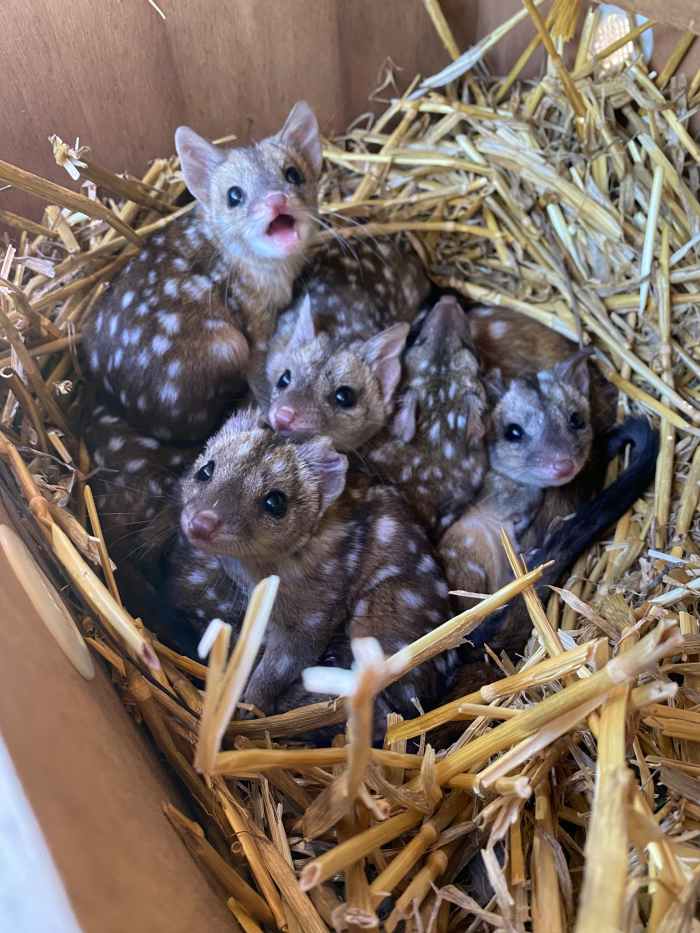In an exciting breakthrough for wildlife conservation, ecologists at Mt. Gibson Wildlife Sanctuary in Australia recently made a remarkable discovery: the first-ever baby western quolls have been born at the sanctuary. This unexpected find occurred during a routine survey when researchers spotted several female quolls with tiny, wriggling infants nestled in their pouches.

Closeup of a western quoll, Photo Credit: Wikimedia
Western quolls, also known as chuditch, are fascinating marsupials that grow to roughly the size of a domestic cat. These adorable creatures play a crucial role in their ecosystems by controlling populations of small invertebrates, reptiles, and birds. Nonetheless, their population has sharply decreased in recent years. According to the Australian Wildlife Conservancy (AWC), western quolls once thrived in various habitats across the Australian mainland, but their range has dramatically decreased since European settlement.

Newborn western quolls coming out of their mother’s womb, Photo Credit: Australian Wildlife Conservancy/Facebook
AWC reports that these quolls are now primarily found in the south-western corner of Western Australia, with their distribution within this area remaining patchy. Following extensive habitat loss and changes brought on by human activity, conservationists have been actively working to reintroduce these unique marsupials back into their former habitats. The recent births are a promising sign that their efforts are beginning to pay off.
“After the reintroduction efforts, it’s heartening to see that the quolls are not just surviving but thriving,” said Georgina Anderson, senior field ecologist at AWC. “Ongoing monitoring shows that the quolls are adapting successfully to their new environment, and the sighting of pouch young marks a major achievement for the sanctuary.”

A western quoll wrapped up in a blanket out in the wild, Photo Credit: Australian Wildlife Conservancy/Facebook
To further bolster the population, animal advocates have been actively involved in transporting groups of western quolls across the country, aiming to establish more sustainable and diverse populations. This month’s transfer marks another key step in their ongoing efforts to ensure these marsupials not only survive but also thrive in the wild.
“We are absolutely delighted to witness the western quoll population at Mt. Gibson flourish,” Anderson continued. “These encouraging indications of successful breeding offer optimism for the future of this species.”
The reintroduction of western quolls is part of a broader strategy aimed at restoring the balance of Australia’s unique ecosystems. Conservationists hope that with continued support and monitoring, these animals can reclaim more of their former habitats.

The baby western quolls huddled together in a box filled with straw bedding, Photo Credit: Australian Wildlife Conservancy/Facebook
As the plight of various species becomes increasingly urgent due to habitat destruction and climate change, the birth of these baby quolls serves as a beacon of hope. It highlights the importance of dedicated conservation efforts and reminds us that with the right interventions, recovery is possible.
For those passionate about wildlife, this heartwarming news underscores the critical role of community involvement in conservation. Whether through volunteering, donations, or simply spreading awareness, everyone can contribute to ensuring a brighter future for Australia’s native species. The successful birth of these quoll infants at Mt. Gibson is a testament to the resilience of nature and the positive impact of human intervention.





